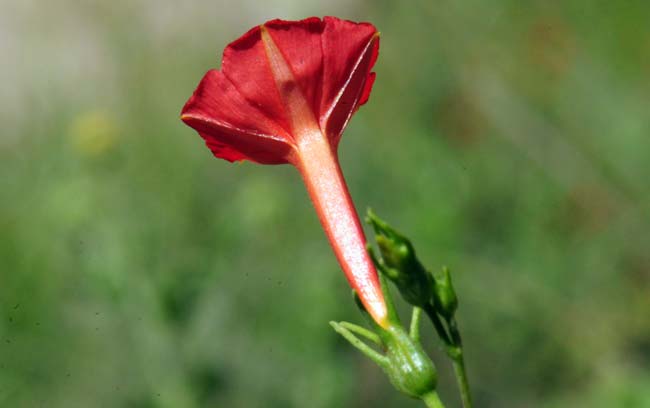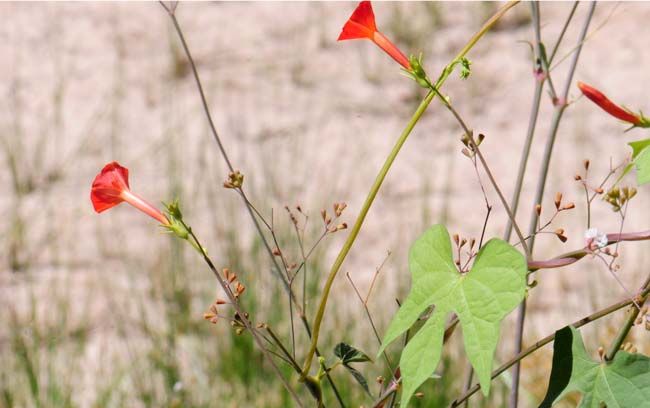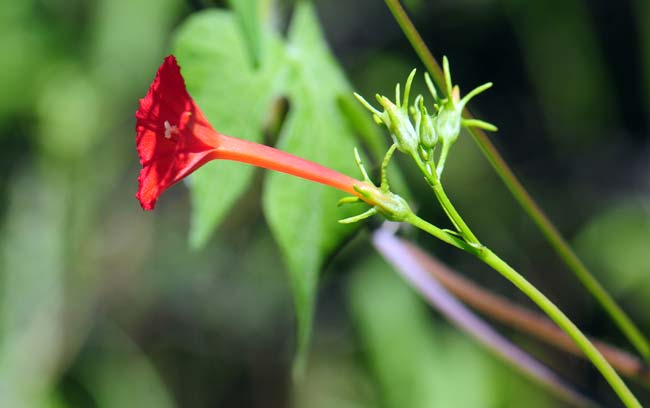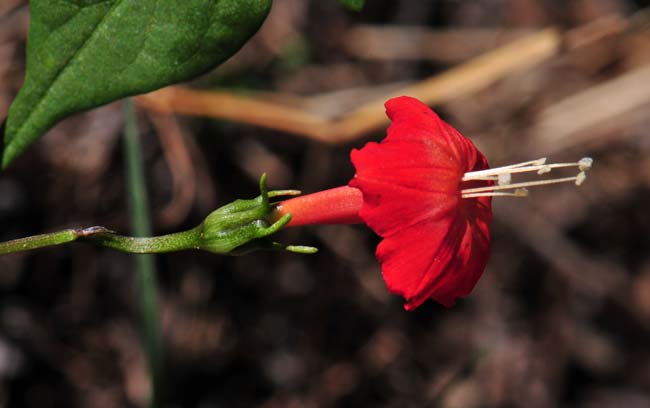Ipomoea cristulata, Trans-Pecos morning-glory




Scientific Name: Ipomoea cristulata
Common Name: Trans-Pecos Morning-glory
Also Called: Scarlet Creeper, Scarlet Morning-glory, Transpecos Morningglory, Transpecos Morning-glory, Trans-Pecos Morningglory; (Spanish: Trompillo)
Family: Convolvulaceae, Morning Glory Family
Synonyms: ()
Status: Native
Duration: Annual
Size: Up to 3 feet or more (climbing).
Growth Form: Forb/herb; vine; erect, twining, climbing on other plants and structures, mostly glabrous.
Leaves: Green; palmately lobed, 3 to 5 lobes.
Flower Color: Red, scarlet red and reddish-orange; showy, corolla a slender tube with flat spreading terminal petals, irregular and uneven sepals, fruit is a globose capsule.
Flowering Season: May to November.
Elevation: 2,500 to 9,000 feet.
Habitat Preferences: Mid- to upper-elevations, chaparral, oak, and ponderosa pine communities.
Recorded Range: In the United States Ipomoea cristulata is found primarily in the southwest portions in Arizona, New Mexico and Texas but also literature records for Kansas and Iowa; AZ, IA, KS, NM and TX. Also found in Baja California and northwest and central Mexico.
North America & US County Distribution Map for Ipomoea cristulata.
U.S. Weed Information: No information available.
Invasive/Noxious Weed Information: The genus Ipomoea is listed as a Noxious Weed by Arizona and Arkansas. Exceptions in Arizona are:
Ipomoea carnea, Mexican bush morning glory,
Ipomoea triloba, Three-lobed Morning Glory, and
Ipomoea arborescens, Morning Glory Tree the federal government and/or a State.
Plants included here are invasive or noxious.
Wetland Indicator: No information available.
Threatened/Endangered Information: No information available.
Comments: Not much information exists for this species. As with other Arizona Morning-glories, perhaps Trans-Peco Morning-glory should be removed from the Arizona’s noxious weed list.
Also see in Southwest Desert Flora; Canyon Morning-glory, Ipomoea barbatisepala, Purple Morning-glory, Ipomoea capillacea, Crestrib Morning-glory, Ipomoea costellata, Ivyleaf Morning-glory, Ipomoea hederacea, Pinkthroat Morning-glory, Ipomoea longifolia, and Tripleleaf Morning-glory, Ipomoea ternifolia.

